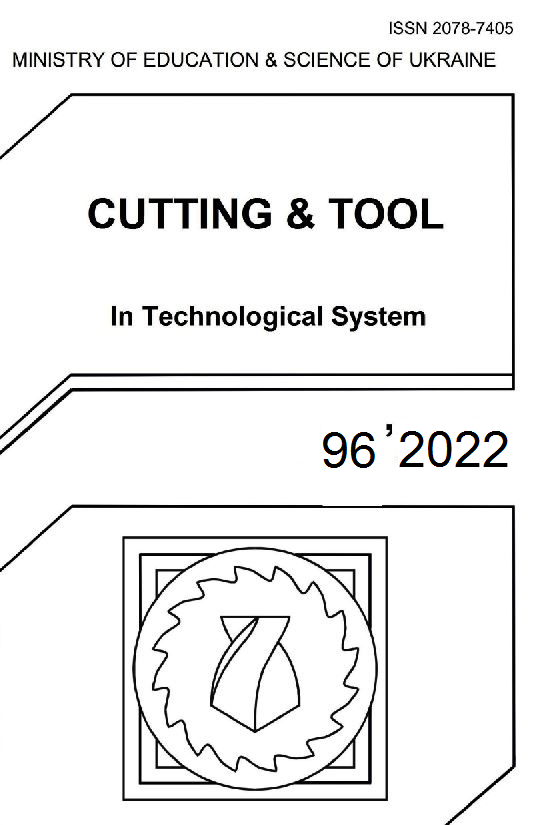IMPROVING THE PROCESSING QUALITY OF CYLINDER LINERS USING COMBINED TECHNOLOGY
DOI:
https://doi.org/10.20998/2078-7405.2022.96.13Keywords:
deforming broaching, finishing antifriction non-abrasive treatment, cylinder liner, roughness, hardness, durabilityAbstract
Due to the use of surface engineering methods, a combined technology for processing the working surface of internal combustion engines cylinder liners has been developed. The advantages and disadvantages of traditional liners processing technologies are analyzed, which allowed identifying ways to improve them. A new technological process of cylinder liners processing is proposed, which includes operations of deforming broaching and finishing antifriction non-abrasive treatment. The technological equipment and tools for the chosen technological process realization are chosen. Experimental studies of the proposed technical solutions feasibility are carried out. The microrelief of the treated surface, roughness parameters, hardness distribution according to the wall thickness were determined for the studied liners, and the amount of wear was determined for the liners after running-in. Parameters analysis of geometric, mechanical and tribological characteristics of the liners working surface, processed by the existing and proposed technology showed significant advantages of the latter. There is an increase in the productivity of processing part up to 4 times, reducing the cost of the tool up to 3 times, and in general – reducing the cost of restoring the liner. It is proved that the use of the proposed technology allows improving the physical-mechanical characteristics of the working surface: strengthening the surface layer to a depth of 0.3 mm, as well as obtaining a roughness close to the operational.
References
Tikhonenko V.V., Shkilko A.M. Reinforcing technologies for the formation of wear-resistant surface layers. Physical engineering of the surface, 2012, no. 4, pp. 237-243.
Suslov A.G. Kachestvo poverhnostnogo sloja detalej mashin [The quality of machine parts surface layer]. Moscow, High school, 2000. 320 p.
Korneev V.M., Kravchenko I.N., Novikov V.S. Tekhnologiya remonta mashin [The technology of repair of cars]. Moscow, RGAU-MSKHA, 2019, 266 p.
Nemyrovskyi Ya.B. Naukovі osnovi zabezpechennya tochnostі pri deformuyuchomu protyaguvannі. Diss. doct. techn. nauk [Scientific bases for ensuring accuracy at deforming broaching. Dokt. tech. sci. diss.] Kyiv, 2018. 451 p.
Rosenberg A.M. Mehanika plasticheskogo deformirovanija v processah rezanija i deformirujushhego protjagivanija [Mechanics of plastic deformation in the processes of cutting and deforming broaching]. Kiev, High school, 1998. 320 p.
Wentzel E.S. Teoriya veroyatnostej i eyo inzhenernye prilozheniya [Probability theory and its engineering applications]. Moscow, High school, 2006. 575 p.
Schneider Yu.G. Ekspluatacionnye svojstva detalej s regulyarnym mikrorel'efom [Operational properties of details with a regular microrelief]. Leningrad, Mechanical engineering, 1982. 248 р.
Ryzhov E.V., Klimenko S.A., Gutsalenko O.G. Tekhnologicheskoe obespechenie kachestva detalej s pokrytiyami [Technological quality assurance of coated parts]. Kyiv, Scientific thought, 1994. 181 p.
Shepelenko I.V. Naukovі osnovi tekhnologії nanesennya antifrikcіjnih pokrittіv z vikoristannyam plastichnogo deformuvannya. Diss. doct. techn. Nauk [Scientific bases of technology of drawing antifriction coating with use of plastic deformation. Dokt. tech. sci. diss.] Kyiv, 2021. 465 p.
Downloads
Published
Issue
Section
License
Copyright Notice
Authors who publish with this Collection agree to the following terms:
1. Authors retain copyright and grant the Collection right of first publication with the work simultaneously licensed under a Creative Commons Attribution License that allows others to share the work with an acknowledgement of the work's authorship and initial publication in this Collection.
2. Authors are able to enter into separate, additional contractual arrangements for the non-exclusive distribution of the Collection's published version of the work (e.g., post it to an institutional repository or publish it in a book), with an acknowledgement of its initial publication in this Collection.
3. Authors are permitted and encouraged to post their work online (e.g., in institutional repositories or on their website) prior to and during the submission process, as it can lead to productive exchanges, as well as earlier and greater citation of published work.

